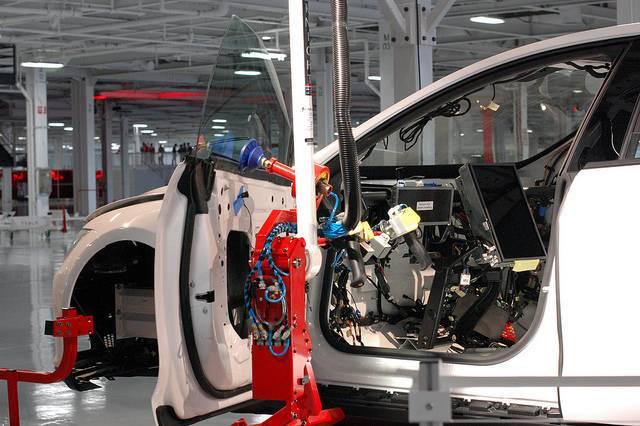FTSE 100 companies get ethical guidance for good governance


Large U.S. Food Service Companies Lag on Sustainable Seafood, Says Greenpeace


According to Greenpeace’s latest annual report on the state of the global fishing industry, the vast majority of the largest food service companies in the U.S. are doing far too little to protect ocean ecosystems and seafood industry workers. In Greenpeace’s eyes, some companies have performed better compared to previous years, but this $700 billion industry has much room for improvement.
In this latest survey, Sodexo (ranked first), Aramark (second) and Compass Group (third) are leaders on sustainable seafood within their sector, and were the only top-15 companies to receive passing scores. But the remaining 12 companies had marks far lower, and from Greenpeace’s point of view, failed miserably.
For those companies that fell far short, a list that includes, Sysco, Performance Food Group and US Foods, the problems are at many levels. Food distributors often face resistance from their customers out of a fear of brand reputation and profits. Traceability is often non-existent. And many within the food service industry ignore the concerns of younger consumers who have made it clear that they are willing to pay a little more for more ethically sourced seafood, whether it is served at a company cafeteria, amusement park or hotel.
Summarizing the problem, Greenpeace concluded its report by saying:
“It is time for the food service industry to refocus its priorities amid declining fish stocks and rampant human rights abuses in the global seafood industry. There is still hope for the oceans if companies are willing to take a long-term outlook on seafood sourcing instead of procuring wild- caught fish from stocks on the verge of collapse or from aquaculture operations with little regard for social or environmental impacts.”
There is some hope, says Greenpeace’s activists and researchers. Thai Union Group, one of the largest seafood suppliers worldwide and owners of the brand Chicken of the Sea, promised earlier this year that it would adopt many of the reforms Greenpeace had urged over the years. The company had long been in the cross-hairs of Greenpeace and other NGOs for alleged human rights violations and overfishing.
Nevertheless, Greenpeace insists the food service industry adopt a broad set of guidelines. They include full transparency and traceability, using technologies like blockchain if necessary; ending “transshipment,” the practice in which ships are resupplied with goods and fuel (also, where fish from dodgy sources are often transferred); welcome third-party observers and auditors across the seafood supply chain; and ramp up efforts to eliminate the use of plastic – one of the most pressing environmental issues plaguing fisheries across all oceans.
Image credit: Garry Knight/Flickr
Symantec’s Cecily Joseph Shares Lessons Learned from a Decade of CSR Reporting


Symantec, the Silicon Valley-based cybersecurity company, just released its tenth Corporate Responsibility Report. Cecily Joseph, VP of corporate responsibility, has led Symantec, and in fact, the sustainability reporting community at large, using quality sustainability reporting standards to drive sustainability programing now for 10 years running. 3p went behind the scenes to gain insights on reporting best practices, highlights from this year’s report, and trends coming around the corner.
Symantec started out strong, winning the Ceres-ACCA Sustainability Reporting award for “Best First Time Report” in 2008. Joseph explains her team got a few things right from the start, and she has since picked up additional best practices in reporting. Here are her highlights:
Keep it short. Symantec’s first CR Report was upwards of 70 pages; Today’s report is only 30.
Listen to stakeholders. Symantec works closely with stakeholders to find out what information is important to them. In the early reporting years, Symantec’s CR department would interview stakeholders and take on most of the report writing. Today, stakeholders take the first pass at drafting report material, as the CR team learned stakeholders are often closer to what’s happening on the ground.
Engagement with stakeholders is a key component of the Global Reporting Initiative's best practices -- one many companies neglect to do rigorously due to time constraints. Symantec has unlocked the key to making stakeholder engagement work for reporting too.
Create a reporting committee. Symantec has built an extensive CR reporting committee that includes representatives from multiple departments, making the reporting process more inclusive. “We see them as a CR committee in general, not just as a reporting committee. The CR department itself is small, and our work depends on CR being integrated throughout the company,” explains Joseph.
Don’t be afraid to set goals, even if you don’t meet them. Joseph notices many companies are hesitant to set goals because they are scared they won’t meet them. “I have found it is important to make public goals - this keeps us on track for continuous improvement and keeps us accountable to our stakeholders. We aren't always able to achieve every goal, but setting them helps push us towards progress.”
Leverage report material 365. “We don’t just publish the report and walk away; we leverage the material for a full year, and it becomes the basis for most of our CR communications,” shares Joseph. She now sees CR information show up in different ways across the company, including in Symantec’s recruiting materials, which is exactly how her team intends for the CR Report to be used. However, this didn’t happen overnight; it takes time for employees to keep CR information top of mind. This is another example of why stakeholder engagement can pay dividends for a strapped department. By engaging employees in the process, they are more likely to see the report as a resource they can use in their jobs.
Don’t let reporting consume you. Symantec’s reporting season can last up to eight months. “You can’t spend all that time focused on the CR Report – you have to build and run programs!” says Joseph. “We learned over the years to integrate reporting into the general flow of all the other work we are doing.”
Operationalize your data collection process. Joseph acknowledges that data collection is the hardest part about reporting and suggests investing the time to put a good system in place up front. Conducting a materiality analysis is a vital first step to identifying priority issues to include in a report; then data must be collected from busy employees and management. Symantec employees are cooperative, but getting them comfortable and used to the data collection and reporting process took time. “Now they expect it and it’s a part of their job and what we do as a company each year,” says Joseph.
Use the GRI framework. Joseph sees this as a valuable tool that can be leveraged to bring a certain order and consistency to a report. “If you haven’t used this tool before, it may seem overwhelming. I encourage you to take the time to figure it out,” says Joseph. She wants to dispel the myth that a company must report on all GRI indicators; only issues identified as priority should be reported on, and this is where conducting a materiality assessment comes in handy.
Highlights from Symantec’s 2017 CR Report
Reaching STEM education goal early. In FY2017, Symantec reached its goal early to educate one million students in STEM education by 2020. “Part of our success came from the energy that’s out there around STEM education,” says Joseph. “People realize we need to build a pipeline and equip our young people with the skills that are needed for STEM jobs that continue to grow.” She notes that cybersecurity is particularly hot job market, with one million jobs currently available. Symantec launched a STEM initiative in 2014, Symantec Cyber Career Connection (Symantec C3), to bring more young adults, people of color, veterans, and women—all of whom are underrepresented in cybersecurity—into cybersecurity careers.Ahead of schedule on greenhouse gas emissions reduction target. Symantec is well on track to meet or exceed its ten-year goal to reduce GHG emissions by 30 percent by 2025, with a target of reaching three percent per year. In FY2017, Symantec reduced its emissions by 15 percent (bringing the total to 19 percent). This has primarily been the result of its workforce planning team’s efforts on energy use reduction through site consolidation and creating more efficient spaces in existing buildings, its ‘cloud’ team’s efforts to decrease the footprint of data centers, and renewable energy projects. The company also became a signatory to the Science Based Targets initiative, committing Symantec to reducing its Scope 3 (supply chain) emissions.
Challenges to tackle
As Symantec values transparency, Joseph highlights challenges the company faced in FY2017, including namely the setbacks to its diversity and employee engagement goals. She believes this was due to the enormous changes Symantec has gone through in recent years, including divestitures, acquisitions and changes to the leadership team. Its employee engagement numbers dropped ten percent, putting the company behind in achieving its target of averaging four volunteer hours per employee. To remedy this, Symantec launched Service Time, which grants employees five paid days off each year to volunteer, and redoubled efforts around its second Global Service Week (GSW), a dedicated company-wide week of service.
Additionally, Symantec’s diversity numbers are not where the company had hoped they would be. As a tech company, Joseph sees it as critical that Symantec continue to bring in and retain more women and people of color. In FY2017, the new CEO, Greg Clark, signed the CEO Action for Diversity & Inclusion Pledge with more than 300 CEOs around the world. “It was important for our employees to see that we have a new leader who is very committed to diversity and inclusion,” says Joseph. Symantec is also piloting bias trainings and working to further integrate diversity and inclusion into the company’s recruiting efforts.
Emerging Trends in CSR Reporting
More companies are willing to acknowledge challenges and failures. Joseph notices more companies willing to publicly discuss struggles and missteps in their CSR efforts. “Other companies have stepped up and shared their challenges, and this has given us the courage to start conversations and do things we probably wouldn’t have been able to do before,” says Joseph. “The more we talk about our common challenges, the more we can learn from each other, and make progress together.” Joseph shares that transparency is critical to Symantec’s brand and reputation because trust is at the core of what it does as a cybersecurity business. “We have to build trust with our customers, employees, and other stakeholders,” she explained.A spotlight on diversity and inclusion. Joseph sees diversity moving beyond the standard questions of what companies are doing internally for current and prospective employees, to include companies asking themselves what they are doing to impact women’s empowerment, LGBTQ rights, and racial equity in society at large. “The expectations on companies to get involved will continue to grow,” notes Joseph.
Privacy and data protection are fast becoming material issues. At a minimum, every company has an obligation to protect its employee and customer data, says Joseph. “Today, there is much more of an expectation that companies talk about this through a corporate responsibility lens.” This is especially true for an IT company like Symantec. However, Joseph finds that U.S. companies in many sectors have work to do to catch up to European companies on this trend.
Integrated reporting will continue to grow, but not negate separate CSR reporting. Joseph recognizes the value of integrated reporting and looking at financial reporting with a CSR perspective, but doesn’t see the standalone sustainability report going away. “In a sustainability report, you might find emerging issues or a narrative that couldn’t be part of an integrated reporting framework.” Joseph has found that regulations around financial reporting are stricter, and that Symantec can be more aggressive with its goals and broader in issue area content in its CR Report.
Companies are going digital. Symantec is relying more and more on its website and other creative digital mediums to tell a cohesive and ongoing CSR story and provide information in an easy-to-access format. Printed reports are getting shorter and becoming a thing of the past.
The best sustainability reports will walk a fine line: reporting on the past while setting goals for the future; sharing hard data while putting it in context with images and stories. Ultimately, the best sustainability report is the one that serves stakeholders and drives an organization forward with shared commitment and purpose. Symantec's sustainability reporting is a shining example.
Solar "Bitcoin" Founders Launch Blockchain Project to Disrupt Global Energy Markets


Last week, the team that launched SolarCoin, billed as the first clean energy digital currency (as in a solar bitcoin), kicked off Greeneum. This blockchain project aims to leverage digital currency in order to boost the generation and consumption of renewables and allow for decentralized energy trading between utilities, producers grid operators, and consumers. Greeneum also says it will adopt artificial intelligence to gauge predictive insights on the entire clean energy life cycle, which the company says will help meet global challenges with integration and reliability as more companies and utilities incorporate cleaner sources of power.
Israel-based Greeneum currently has pilot programs operating across Africa, the U.S., Europe and Israel. The company says this technology is timely as energy experts have long lamented that power systems worldwide have become outdated and inefficient. Many of these networks are hampered by the challenges they face in a 21st-century economy, which has already required a rapid transition to low-carbon sources. Creaky grid systems and a lack of transparency between the energy sector’s relationship with government officials, insists Greeneum’s founders, further contribute to the disparity in costs between new sources of energy and what consumers currently still pay.
In California, for example, the surge in solar power generation at times have forced the cost of electricity prices down. Nevertheless, some consumers across California still pay some of the highest utility bills in the U.S. – the Golden State’s mild weather, many energy analysts argue, prevents many bills from becoming even higher.
But Greeneum’s network could help tackle such problems in two ways. First, the system will use blockchain technology to identify, manage and track billions of energy trades worldwide. Energy companies and utilities will then be able to harness the network’s “smart contacts” to secure the data points they need. The system can be tailored, as in the case of a utility operating across state lines that only want to track data from specific points. In addition, Greeneum will also use artificial intelligence and machine learning to validate energy data, allowing users across the network to put together forecasts and can reap this data for insights.
Blockchain technologies have become increasingly touted as a path towards scaling up renewables, streamlining transactions such as when homeowners are ready to sell their rooftop solar, utilities bid on competitively-priced wind power or companies track renewable power trading certificates. Today’s systems in use just are not adequate for these tasks, wrote Mike Orcutt for MIT Technology Review earlier this year:
“Such a byzantine system racks up transaction costs, while leaving plenty of room for accounting errors that can range from honest mistakes to outright fraud. The lack of transparency also scares many people off entirely.”
But blockchain could finally disrupt the 20th-century technologies that currently stitch global energy systems together. This technology first caught on as it evolved as the backbone of bitcoin transactions; they were then heralded for their ability to make supply chains more efficient and transparent. Now, clean power blockchain pilots are launching worldwide, from Perth, Australia to Brooklyn.
Greenum’s system will center on a utility ERC20 token called “GREEN” that seeks to accelerate clean energy production while rewarding users for adopting renewables. Sales of these tokens will launch on Thursday, October 26. Greeneum’s funders anticipate the entire project and platform to be completed by mid-2018.
Image credit: Pete Jelliffe/Flickr
Fish, the Next Battle for the Animal Welfare Movement


Animal welfare activists have scored many victories in recent years as they have convinced more companies to stamp out cruelty in their supply chains. The results have been, at a minimum, a better quality of life for some chickens, pigs and cows.
Now, the NGO Mercy for Animals says it is time for this thinking to apply to fish, especially as aquaculture becomes more important to the global seafood supply.
Whether fish feel pain or stress has long been debated. PETA highlights scientific research that concludes fish indeed come under duress when they are caught on hooks or speared. Other research suggests fish do not feel the pain humans or other animals do. But that has not swayed the opinions of leading activists including Paul McCartney, who almost a decade ago appeared in a video that gave a scathing indictment of the global meat industry – and his narration included fish.
From Mercy for Animals’ point of view, fishing in any form is cruel to our gill-bearing friends. But the organization has especially had the knives out for factory fishing, citing an article last week in the New York Times that highlights research suggesting fish can suffer from stress and depression.
Sea lice, an endemic problem in many salmon aquaculture operations, is one way in which fish can suffer. Sea lice are big business. Several reports over the past year have estimated that the farmed salmon fishing industry has lost at least $1 billion this year alone on treatments. In addition to vexing aquaculture farmers, sea lice, long documented by various journalists, have also exacted cruelty on fish as well. PETA has long echoed these concerns, and has described sea lice as a “death crown” for salmon, largely due to allegations that these fish are far too crammed at many aquaculture facilities.
Organizations such as the Human Society have insisted that many aquaculture practices need to stop as they inflict unnecessary pain on fish. A study the group had commissioned urged seafood companies to end gill-cutting without prior stunning, asphyxiation in the air or on ice, carbon-dioxide stunning and live chilling.
Mercy for Animals calls for the end of fish cruelty with a call to consumers to switch to a vegan diet. Considering the growth of the global middle class and the continued surge demand for protein, that will be a tall order. But just as in the case with “fake chicken” and beef substitutes, cruelty-free options to seafood could become a more viable option as they scale and improve in quality. Algae-based products could help new seafood alternatives become more acceptable to consumers. Meanwhile, the seafood industry appears to be ready to have a frank discussion of this problem. The outcome would not only be a relief for oceans’ ecosystems, but a more ethical supply chain that currently is rife with abuses could result as well.
Image credit: NOAA/Flickr
NRG Brightens Days Through 'Choose to Give' Program


Imagine building a new play area for hospital patients in Delaware, sponsoring pediatric cardiology care in Philadelphia, or supporting Boston Children’s Hospital’s most urgent needs - all by simply paying your electricity or natural gas bill.
NRG customers can do just this through the company's Choose to Give program. When a new customer signs up for a 12-month Choose to Give electricity and/or natural gas service plan, NRG contributes $50 to the customer’s choice of nonprofit partner. The utility then contributes one percent of the customer’s energy "supply portion" of their bill each year they renew their plan. All the customer needs to do is select one of the six nonprofit partners upon signup.
NRG has contributed more than $125,000 to partner organizations since the Choose to Give program started in April of this year.
Mike Starck, General Manager, NRG Retail East Division, discussed the new program during this month’s COMMIT!Forum, as part of a panel discussion on “The CSR Imperative - Maximizing Impact.”
“This has been an employee-driven project from the start,” said Starck. “Before we committed, however, we wanted to know how we could make this meaningful, and provide maximum benefit to our partners.”
Partners benefit from the Choose to Give program in many ways beyond the financial contributions. The partners increase visibility through cross-promotional cause marketing campaigns with NRG - whether in print, online, or at NRG information tables in busy retail locations. The increased brand awareness also led to an uptick in NRG employee volunteers at many of the organizations.
One of the most important benefits of Choose to Give is that it ensures reliable, recurring revenue - a crucial resource for nonprofits.
“Take our partner Big Brothers, Big Sisters Independence Region, for example,” said Starck. “Their contributions are typically from local government or private donors, and can be inconsistent. The revenue from Choose to Give allows them to plan ahead and build the contributions into their budget, rather than waiting until they can get additional funds for a specific project.”
Partner Spotlight: Nemours/Alfred I. duPont Hospital for Children
For participating partner suggestions, NRG management asked Philadelphia-area employees for their input. Children’s Hospital of Philadelphia (CHOP) and Nemours/Alfred I. duPont Hospital for Children in Wilmington, Del., were some of the first suggestions, as colleagues had children helped by these hospitals.
“Their lives were literally touched by these organizations,” Starck said.
Marie Vacca, Manager of Community Initiatives at Nemours, spoke with me at COMMIT!Forum regarding the impact of NRG’s Choose to Give partnership at the hospital.
As of September, NRG’s Choose to Give program had generated more than $24,000 for Nemours.
These funds are currently going to the hospital’s Child Life Program, which supports patients and their families through play, education and creativity. Child life specialists use compassion, humor and fun to bring a sense of normalcy to children’s and parent’s lives during otherwise stressful and often overwhelming times. The hospital is currently building a new child life center, to further enhance the experience of young patients.
“This will be such an important resource,” said Vacca. “The contributions from NRG are really making a difference to these children.”
Tesla Faces String of Harassment Lawsuits


Tesla is often celebrated as a company keen on “changing the world,” but as the news headlines have screamed the past couple weeks, much of the world has not changed much in terms of respect being granted to everyone in the workplace. And this applies to Silicon Valley, which prides itself as being forward-thinking on climate change, diversity, center-left politics and of course, how technology can accelerate all of this progress.
Now Tesla has been caught up in what some critics have often described as the “bro" culture, which still permeates many of the office parks and office towers from San Jose to San Francisco. Uber, for example, long endured a headline-grabbing sexual harassment scandal, one of the many reasons why former CEO Travis Kalanick stepped down this summer. Similar accusations and investigations have also occurred at Google, Social Finance and Greylock Partners. News outlets from Bloomberg to CNBC have intimated that the problem is far worse that assumed.
At Tesla, the latest case involves an assembly line worker who claims he was harassed for being gay. Jorge Ferro filed a wrongful-termination lawsuit, saying he was taunted and was told “watch your back.” A scar on his wrist from a 16-year-old injury reportedly attracted the attention of someone at Tesla’s human resources, who then dismissed Ferro. He claims his firing was due to retaliation.
But when the Guardian, who first broke the story, contacted Tesla, the company first punted on the issue, claiming that Ferro and his supervisor were not employees, but contractors. “Tesla takes any and every form of discrimination or harassment extremely seriously,” the company responded. “There is no company on Earth with a better track record than Tesla, as they would have to have fewer than zero cases where an independent judge or jury has found a genuine case of discrimination.”
Tesla then lashed out at the publicity, pointing out that because of its global visibility and brand reputation, any media outlet or attorney seeking a higher profile would single out the company.
That may be true, but the problem for Tesla is that there have been other accusations of boorish behavior in recent years. Last week, three former African-American workers said in a lawsuit filed in a California state court they were subjected to racist slurs, both verbal and written. In addition, a former Tesla engineer claimed she was fired after she brought examples of gender discrimination to human resources.
Meanwhile, as Tesla is dealing with the fallout over the sudden dismissal of at least 400 employees, the automaker is enduring an investigation by the National Labor Relations Board over unfair labor practices.
From Tesla’s point of view, the electric vehicle upstart is a company being kicked when it is already down. The company currently is grappling with eye-rolls, told-you-so’s and exasperation over bottlenecks in its much-hyped Model 3 series. Tesla’s CEO, Elon Musk, had said the company faced “production hell,” but would still crank out 1,500 of those cars last month, and 20,000 a month before January 1. But the Los Angeles Times reported that only 260 Model 3’s rolled out of its Fremont assembly plant by September 30, and Fortune piled on by noting the company is producing 84 percent fewer Model 3s than Musk promised. Hence Tesla’s recent mass firing has elicited its fair share of head-scratching.
Whether the discussion is over workplace culture or the company’s products, the problem Tesla and Musk have is that they have a history of taking the bait when accusations and criticism are flung at the company, which then makes an unseemly situation even worse. The latest such chapter was when the company earned scorn for its reaction to a Consumer Reports’ recent review of the Model 3, which stated the car’s reliability was “average.”
In that vein, in its response to the anti-LGBT lawsuit, the company could have just issued a dull, boring statement that it would not comment on litigation. Instead, the company comes across as shrill and defensive, and slams the Guardian as writing the story for click-bait. Even worse, Tesla’s spokesperson reminded the world that those former workers were at the heart of the dispute were not technically Tesla employees – and offer another reminder of the harsh reality contract workers confront day-to-day in Silicon Valley.
Accountability would help Tesla swat away some of the negative press about which the company is quick to complain. As one defendant told the Guardian’s Sam Levin about Tesla’s struggles with its workplace culture, “Don’t sweep it under the rug and send your PR out to do damage control. Step up to the plate.”
Image credit: Maurizo Pesce/Flickr
Mike Bloomberg Contributes $64 Million to Sierra Club’s Beyond Coal Campaign


The Trump Administration with Scott Pruitt leading the charge may be dismantling the Clean Power Plan, but former Mayor of New York City is doing his part to advocate for cleaner sources of power in the U.S.
Hours after President Trump made his plans for the Clean Power Plan clear, Bloomberg announced he would contribute $64 million to the Sierra Club’s Beyond Coal program.
With this additional contribution to the Sierra Club, the 75-year-old former business and politician has to date reportedly invested over $100 million to various environmental causes over the years. For example, Bloomberg earlier this year launched a $3 million fund designed to shift coal country toward renewables; all the while the former three-term mayor has been vocal in his insistence that the U.S. remain a signatory to the Paris Accords. To that end, he has also launched an initiative, “America’s Pledge,” that will collect and analyze climate change data collected by U.S. states, cities and businesses across the U.S. who are still aligned with the 2015 Paris Agreement.
In making last week’s announcement from the Sierra Club’s office in Washington, D.C., Bloomberg said he recognized the challenges imposed by the federal government’s reversal, yet he insisted that he is still optimistic about state- and local-driven clean power programs.
Bloomberg’s latest funding pledge will focus on continuing local clean energy initiatives. In the wake of the Trump administration’s proposed elimination of various environmental and public health regulations, including those that applied restrictions on how much carbon power plants across the U.S. can emit, Bloomberg aims to stymie the Trump White House’s pledge to accelerate U.S. coal production.
According to the Sierra Club, at least 259 coal power plants have been shuttered nationwide since its campaign launched in 2011 in 45 states. Bloomberg’s contribution to this effort will allow the Sierra Club to still plan with the private sector, local civic leaders, governors, state legislators and utilities to enact policies such as air quality standards and rules that can help pave the way for renewable technologies such as solar and wind power to scale in the coming years.
“The war on coal was started and continues to be led by communities in both red and blue states who are tired of having their air and water poisoned when there are cleaner and cheaper alternatives available, cities and states that are determined to clean their air and reduce their costs, and businesses seeking to lower their energy bills while also doing their part for the climate,” Bloomberg said in announcing this expanded support for the Sierra Club.
Bloomberg also noted one bright side of the energy debate: Coal plants continue to be retired at the same pace in the Trump administration as they did during Obama's presidency.
Image credit: Department of Interior/Flickr
Seattle's Affordable Housing Provides Lesson for Cities Coveting Amazon's HQ2


The race is on for Amazon's second global headquarters, dubbed "HQ2," as civic leaders salivate at the thought of how landing the online retailer and cloud computing giant can burnish their legacy. Even Fresno has made a bid for HQ2, one its mayor describes as "counterintuitive" because the city is not offering generous tax breaks or financial incentives.
Several of the bids smack of desperation: Kansas City's mayor bought and reviewed 1,000 items on Amazon; Tuscon sent a 21-foot saguaro cactus, which Amazon promptly re-gifted; and a town in Georgia said it would parcel out 345 acres and rename this new town "Amazon."
But as these cities scramble to attract what could be as many as 50,000 high-paying jobs in the quest to become the latest and greatest "smart city," they need to be reminded of the flip side in what could happen in scoring Amazon as its newest corporate resident. One only needs to take a look at the home of Amazon's HQ1, Seattle, to see that along with the buzz and excitement of having the company within its center core, an affordable housing crisis has also festered - and unless drastic policy changes occur, these problems will not be solved at any point soon.
Seattle exemplifies how more companies are returning to cities after spurning them for decades. Amazon's campus in the city's South Lake Union district has transformed a part of town that was known as an area to avoid only 15 years ago. Across the U.S., similar changes have occurred. Downtown Detroit will continue to boom, due to Dan Gilbert's continued drive for investment. Other corporate shifts from suburbs to cities, such as the relocation of McDonald's to downtown Chicago and General Electric to Boston, have become the norm as employers realize their workers do not want to venture far to live, work and play. And judging by appearances, the results look fantastic, as these revamped neighborhoods are now crammed with young workers, food trucks, transit hubs, new retail store fronts (yes, even where Amazon is located) and of course, new apartment towers.
It's the latter that poses the biggest problem for cities, and should give civic leaders pause as they imagine Amazon arriving on the scene - high housing costs and rising homelessness have been ongoing struggles across Seattle in recent years.
In fairness, this is hardly a problem unique to Seattle. Cities struggle with this problem largely because housing starts nationwide have cratered since the 2008-2009 fiscal crisis and have not recovered to the pre-2008 annual figures of 1.6 million new homes a year. Many economists argue that is the case largely because of zoning laws that aim to preserve cities' local character, but also have restricted the supply of housing.
That has created a nightmare scenario in Seattle, now the fastest-growing large city in the U.S. and also the country's hottest housing market. The median price of a house in Seattle is now $729,000 and is even higher in more coveted neighborhoods. And while Seattle keeps building apartments at a rapid pace - in fact, the city is a U.S. leader in new apartment construction - these homes cannot be built fast enough, and many are not affordable for middle- and working-class families. Housing activists in Seattle say Amazon is a huge part the problem, as Amazon's growth - not to mention the companies doing business with the company - contributes to the scarcity of housing and skyrocketing prices.
The short answer to fix America's housing crisis is high-density housing. The problem is that NIMBYism, long the bane of the California housing market, often gets in the way of affordable housing. Zoning laws also need to change. Chipping away at renting practices, such as those that favor tech workers (or any demographic) would also help reverse America's housing struggles. But the problem is that a company the size of Amazon can make even the best urban planning scheme go awry. Amazon and its peers need to step up and ensure that they are willing to work with the cities in which boost their presence. That means working together on fair housing and public transportation challenges - not defining its relationship with a city based on how many billions in tax breaks they can score.
Image credit: Adbar/Wiki Commons
2,000 TriplePundit Articles Later, The Organizations I Most Admire


In March 2010, I wrote my first TriplePundit article on a bicycling delivery service in Paris that no longer exists. Since then, I have learned a lot, and at the same time it’s been gratifying to watch more businesses come on board and take the lead on sustainable development, environmental protection and human rights.
Now, 2,000 articles later, of course there is still a lot of work to be done. No business is perfect; nor will they ever be. But over seven years and a million-plus words later - not to mention all the interviews I have conducted - I have a strong idea who leads when it comes to sustainable business. In my experience, this list includes organizations that stand out. That is not to say their records are perfect, and of course there are other companies that do fantastic work. But time after time, these organizations remind me over and over again what sustainable business, and leadership, are all about.
Campbell Soup Company: While many companies still dig in their heels on environmental and social issues, Campbell’s has been quick to take the bull by the horns. Companies that seek to not only become more responsible, but to follow this journey well and communicate their goals more than just “effectively,” should look to Campbell’s as a case study on how to get there. The company has addressed a wide range of challenges, from GMOs to the fallout over what happened in Charlottesville; and meanwhile its nimble sustainability team engages customers and stakeholders along the way. Of course, Campbell’s also benefits from having Dave Stangis, its Vice President of Corporate Responsibility and Chief Sustainability Officer, on board. Stangis, who reports directly to the company’s CEO, has long been a thought leader and mentor in this field.
Costco: I’m often asked, “Where do you shop?” and the expected answer is usually Whole Foods or the random health food store in town. When I answer with “Costco,” jaws usually drop, so I quickly explain why: the social pillar of sustainability is often overlooked by many in this space. And while I support programs like fair trade and supplier transparency efforts to improve lives of people overseas, I also believe change needs to occur simultaneously at home. Costco pays its employees better than almost any other retailer, its health care benefits are generous and its local supplier outreach program has won me over.
Environmental Defense Fund: I have always believed that if we want businesses to be part of, and even now lead, this sustainability movement, they need to be engaged, not badgered. So when I am emailed a pitch from someone that says, “My client is partnering with an NGO on this issue, an innovative collaboration in this industry,” my response is often this:
“Well that’s nice, but remember EDF has long been partnering with some of the world’s leading companies, and they’ve been doing this since before you were born.”
Whether its experts’ research on the water-energy nexus, the environment’s relationship with public health, supply chain, or renewable power challenges, this NGO boasts some of the smartest people within their ranks. Meanwhile, EDF’s Climate Corps program is grooming the next generation of sustainability professionals. In addition, this organization’s work with companies on their supply chains often goes under the radar – but it deserves far more attention because this is where some of the hardest, and most transformative work – is underway.
Marks and Spencer: In the retail and apparel sector, I view the United Kingdom-based department store chain M&S as a trailblazer. Before many garment and retail companies took on the problems of human rights and environmental degradation in their supply chains, M&S resolved to become more transparent and lead on sustainable sourcing. The company was one of the first apparel chains to launch a clothing recycling initiative; in the meantime, it has strived to ensure that more of its products, from food items to business suits, are genuinely “sustainable.”
Method: A generation ago, before the word “sustainable” was even in the lexicon, “alternative” products were often dowdy, overpriced and lagged on performance. When it came to cleaning products, however, conventional options were generally noxious, smelled horrid and were in ugly bottles. Method toppled that thinking. Their plant-based surface cleansers work well, the bottles look great, and are priced competitively at retailers like Target. I can guarantee that I would not be as manic cleaning surfaces the way I am now if Method were not around; and I don’t mind that their color-block bottles are scattered around my home. Plus who would not want to work within their off-beat, quirky culture – even after they were acquired by Ecover and recently, SC Johnson?
Union of Concerned Scientists: I believe in science, and I definitely believe in this organization. Whether its leaders smack down efforts to make climate denial mainstream, or hold companies responsible for the impacts their meat or palm oil supply chains have on people and the planet, UCS is a counterweight to companies who say one thing publicly but behave otherwise - and at the same time, their researchers and scientists make their cases forcefully and eloquently.
Honorable mention: I have long had mixed feelings about Walmart (a Google search for Walmart and my name will find my analysis all over the map) but their investments in supply chain sustainability and renewables cannot be overlooked; and what is important about their actions is that it nudges their competitors to do the same, which is only a benefit for the planet. Ditto for Ikea, which has been a huge investor in renewables. General Motors and Ford are worthy of a shout-out for their interesting work within local communities and on the development of sustainable materials. Finally, apparel companies such as Nike and Adidas are doing their part to do a better job sourcing recycled materials or more responsible cotton.
Image credit: Marks and Spencer